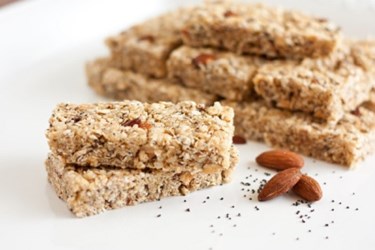How Will Innovations Shape The Future Of Snacks?
By Isaac Fletcher, contributing writer, Food Online

As consumers increasingly demand snacks that are both healthy and indulgent, craft brands gain the opportunity capture market share by creating savory offerings from popular super foods
With a fresh take on an old market, craft snack brands will likely lead innovation by balancing health and indulgence. For many consumers, health has become a primary concern when choosing food products, and this is particularly true concerning snacks. However, the indulgence factor must not be overlooked if a snack producer hopes for its products to remain relevant. With this information in mind, it is likely that smaller, craft brands will lead innovation in this particular market space.
Rather than the already-established large producers, it is the small brands that are the ones driving snack innovation since they are often starting from scratch. In order to have a chance at entering the market in any meaningful way, small brands must bring something new and interesting to the table in order to differentiate their products from the competition. Achieving success in this market is all about finding the proper balance between health benefits, indulgence, and flavor, leaving emerging brands with a greater incentive to innovate.
The growing trend of incorporating super foods, such as quinoa and kale, into snack bars and fruit snacks is one such innovation that has been introduced by small players, laying the groundwork for more healthy innovations by the larger snack producers. The use of new grains and/or ancient grains that are rich in vitamins, minerals, and protein may be a solution to the health and flavor criteria that many consumers demand. Additionally, popped chips — along with popcorn — will continue to take a sizable share of the snack market due to their lower fat and oil content.
Case Study: A Breakthrough In Snack-Packing Efficiency: Red Mill Welcomes The Ishida FPS
In order to create a broader consumer base and add longevity to these types of products, it is important for manufacturers to offer the indulgence factor that many customers crave. The unusual textures of many of these super foods offer snack manufacturers the opportunity to experiment with flavor and create unique offerings.
Aside from health, flavor, and indulgence, snack producers should also consider the time of day toward which their snack is targeted. In the morning, consumers are more likely to gravitate toward nutritious and traditional breakfast foods as snacks to provide energy throughout the day. Conversely, in the evening and afternoon, consumers lean more toward unhealthy snacks like chocolate and potato chips. This is an important consideration for companies, as targeting the right product to the right time of day can help small producers differentiate in a competitive market.
In the future, snack options will likely be much broader as they continue to grow and vary. Ultimately, almost anything could be served as a snack as long as it is positioned and marketed for that space. Rising health concerns coupled with the prevailing desire for indulgence will continue to spur innovation, especially among smaller producers, the successes of which will be picked up by the big players of the snack industry.
